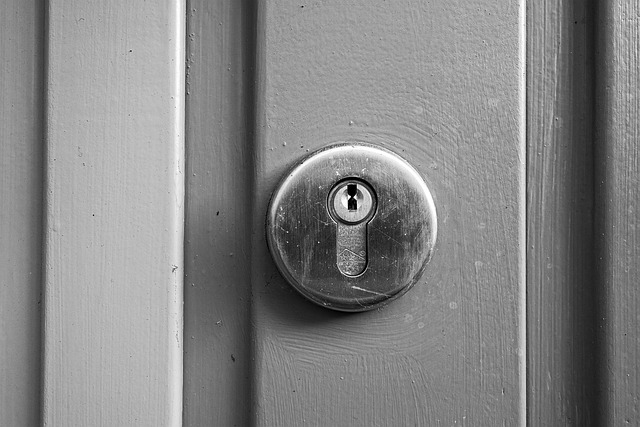When securing a pet-friendly home, opt for smart security systems that employ advanced motion sensors capable of distinguishing pets from intruders, preventing false alarms and ensuring comprehensive protection. These systems, featuring GPS trackers, cameras, and AI, learn pets' habits, strategically avoid triggering in common activity areas like doorways, staircases, and pet gates, allowing for a peaceful coexistence between family members and furry friends while maintaining top-notch security (motion sensors for family homes).
In today’s digital era, ensuring your home is secure while keeping your furry companions safe is essential. For pet owners, implementing a pet-friendly home security system offers peace of mind and enhanced safety for both family and pets. This comprehensive guide explores the unique needs of pet-owners in securing their homes, delving into various motion sensors designed for family homes and providing tips to integrate pet-safe features seamlessly. Discover how advanced security systems can coexist harmoniously with your beloved pets, offering benefits for all.
- Understanding Pet-Friendly Home Security Needs
- Types of Motion Sensors for Family Homes
- Integrating Pet-Safe Features into Security Systems
- Benefits and Tips for Implementing a Pet-Friendly Security Solution
Understanding Pet-Friendly Home Security Needs

When considering pet-friendly home security, it’s crucial to understand that our furry friends can sometimes trip up traditional alarm systems. Pets, especially active ones, can set off motion sensors accidentally while going about their daily routines—pouncing on toys, jumping onto furniture, or simply walking through doorways. This is why a pet-aware approach to home security is essential for maintaining peace of mind without causing unnecessary stress for your beloved pets.
The heart of a pet-friendly system lies in its sensors. Instead of relying solely on motion detectors that might be triggered by a curious cat or energetic dog, consider smart sensors designed with animals in mind. Some systems use advanced technology like pet-identifying cameras and GPS trackers, allowing you to monitor your home without false alarms. Additionally, integrating sensors in areas pets frequently visit—like doorways, staircases, and even pet gates—can prevent accidental triggers while ensuring the security of your family home.
Types of Motion Sensors for Family Homes

When it comes to securing your family home, motion sensors are a key component in any pet-friendly security system. These devices play a vital role in detecting intruders and can help keep your four-legged companions safe. There are several types of motion sensors designed specifically for residential properties, each with unique features catering to different needs.
Passive infrared (PIR) sensors are commonly used in home security systems due to their effectiveness in detecting body heat. They’re excellent for capturing movements within a specific range and angle, making them ideal for entranceways and living areas. On the other hand, microwave motion sensors use low-power microwaves to create a beam across an area, triggering an alarm when movement disrupts this beam. These are particularly useful for larger spaces like hallways or garages where PIR sensors might have limitations. Advanced systems may also employ dual-tech sensors that combine PIR and microwave technology for enhanced accuracy.
Integrating Pet-Safe Features into Security Systems

When integrating pet-friendly features into home security systems, the focus should be on creating a balanced approach that keeps both pets and families safe. Motion sensors are a key component in many security systems, but they can often trigger falsely due to active pets. To mitigate this, look for systems with adjustable motion sensor settings, or those equipped with pet-friendly modes that recognize common pet movements and behaviors, minimizing false alarms. Additionally, some advanced systems employ AI and machine learning algorithms to differentiate between family members, pets, and intruders, ensuring peace of mind without constant interruptions from the family dog or cat.
Benefits and Tips for Implementing a Pet-Friendly Security Solution

Implementing a pet-friendly home security system offers numerous benefits for families with furry friends, ensuring peace of mind and a safe environment for everyone. One of the key advantages is the use of advanced technology like motion sensors, which can distinguish between pets and intruders, avoiding false alarms triggered by your beloved animals. These sensors, often integrated into smart home systems, learn the routines and patterns of your pets, allowing them to adapt without disrupting your daily lives.
When setting up a pet-friendly security solution, consider placement and sensitivity levels. Motion sensors should be strategically positioned, taking into account common pet activity areas without being overly sensitive in spaces where false triggers are more likely, like near food bowls or beds. Regular training and positive reinforcement can help pets understand the system’s purpose, fostering a harmonious relationship between security and your furry companions.
When choosing a pet-friendly home security system, understanding your pet’s habits and incorporating the right motion sensors tailored for family homes is key. By integrating pet-safe features, you can ensure a secure environment for both your family and beloved pets without false alarms. Implement these solutions to create a harmonious balance between safety and companionship.
